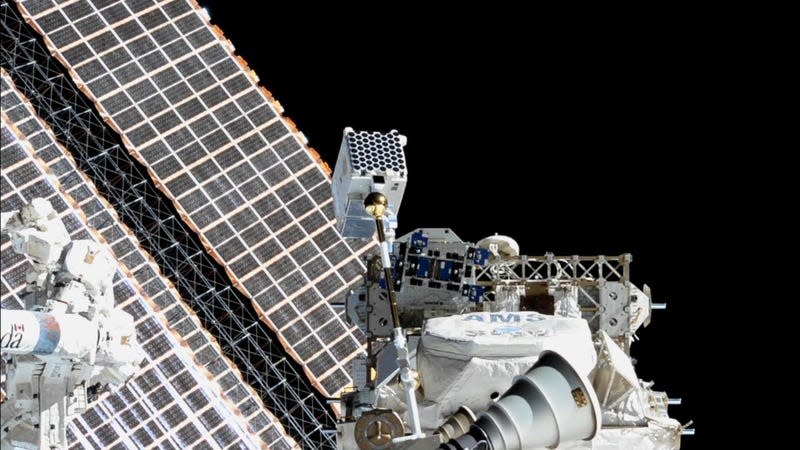'An Exciting Challenge': NASA Plans Rare Repair Spacewalk to Fix Busted Telescope

NASA is preparing to send astronauts on a spacewalk to repair a telescope mounted on the exterior of the International Space Station (ISS). The repair involves installing patches to eliminate unwanted sunlight leaking into the instrument.
NICER (Neutron star Interior Composition Explorer), an X-ray telescope the size of a washing machine, launched to orbit in 2017 to study regular pulses from neutron stars, light echoes from flaring black holes, and other sources of X-rays in the cosmos. In May 2023, scientists behind the mission discovered a light leak, whereby sunlight was reaching the telescope’s sensitive detectors and affecting its measurements during daytime on the space station.
“Blocking some of the light leaking in would allow us to return to more normal operations around the clock,” Zaven Arzoumanian, NICER’s science lead at NASA’s Goddard Space Flight Center, said in a statement. The ISS receives 45 minutes of light followed by 45 minutes of dark as it orbits Earth in 90 minutes.
The telescope has 56 aluminum X-ray concentrators, and each concentrator has a set of nested mirrors and a thin filter to block out sunlight. The concentrator is then topped by a hollow circular piece of carbon composite, called a sunshade, that’s made up of six segments that end up looking like a sliced pie, according to NASA. After the light leak developed on NICER, its photos revealed several small areas of damage in some of the shields.
NASA is not sure what caused the damage, but it’s determined to fix it. “We didn’t design NICER for mission servicing. It was installed robotically, and we operate it from the ground,” Keith Gendreau, NICER’s principal investigator at Goddard, said in a statement. “The possibility of a repair has been an exciting challenge.”
The team behind the mission will launch patches to the ISS on board Northrop Grumman’s 21st commercial resupply services mission later this year. The patches will be installed by the astronauts to repair the light leak. “We considered both spacewalk and robotic solutions, puzzling out how to install patches using what’s already present on the telescope and in space station toolkits,” Gendreau added.
Astronauts have been commissioned to repair science observatories in orbit before, including the Hubble Space Telescope. A total of five servicing missions were launched to Hubble between 1993 and 2009 to repair and upgrade the telescope. The Solar Maximum Mission and the Alpha Magnetic Spectrometer (AMS), also located on the ISS, are the only other science observatories that astronauts have repaired in orbit, according to NASA.
Still, doing handy work in space while tethered to an orbiting space station is no easy feat. “While we worked hard to ensure the patches are mechanically simple, most repair activities in space are very complicated,” Steve Kenyon, NICER’s mechanical lead at Goddard, said in a statement. “We’ve been conducting tests to confirm the repair work will be both an effective fix for NICER’s light leak and completely safe for the astronauts on the spacewalk and the space station.”
For more spaceflight in your life, follow us on X and bookmark Gizmodo’s dedicated Spaceflight page.

